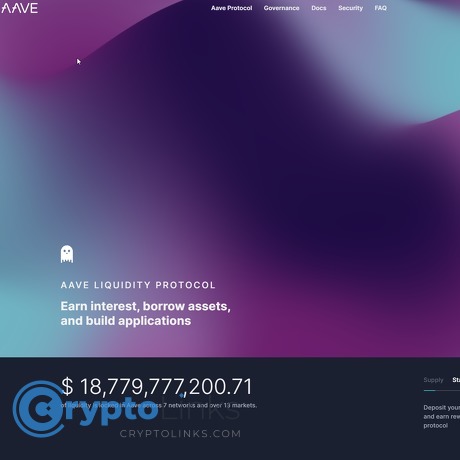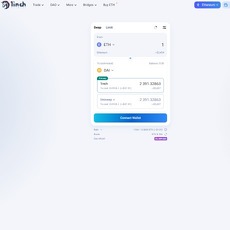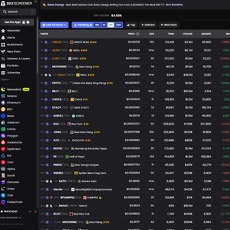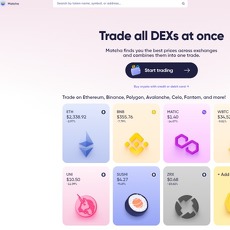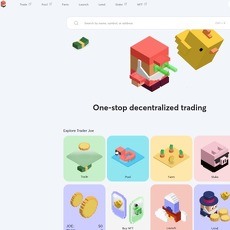Aave Review
Aave
aave.com
Aave Review
The DeFi space is gradually coming of age and delivering on some of the promises made at the very beginning. Today, the average user can choose from a plethora of DeFi services designed to eliminate the need for intermediaries and custodians. What DeFi does is that it puts you and me at the front seat of our financial journey such that we get the final say over how our money is stored, spent, and invested.
At the heart of this movement are decentralized applications (dapps) that continue to expand the scope of decentralized finance and enable practical use cases for mainstream users. One of such dapps that has remained at the forefront of this exciting financial sector is Aave. The platform has one of the most established DeFi lending infrastructures today and has consistently featured among the most engaged dapps ever. In this guide, we will be taking a look at the operations and features of Aave. We will also be highlighting its strengths and weaknesses, that is if it has any.
What is Aave?
Aave, formerly called ETHLend, was launched in 2017 on the Ethereum network as a decentralized alternative to traditional lending solutions. The platform went on to rebrand in 2020 when it changed its name to Aave and launched the AAVE token as a replacement to the ecosystem’s existing LEND token (Aave is the Finnish word for ghost). During and after this rebranding, all LEND holders were advised to swap their tokens to AAVE at a 100:1 ratio. Hence, every 100 LEND that a user holds will fetch him 1 AAVE after the swap.
According to the information on its website, Aave is a “decentralized non-custodial liquidity market protocol where users can participate as depositors or borrowers.” In other words, it is a platform where users can lend out or borrow cryptocurrencies. More importantly, the entirety of the Aave ecosystem is decentralized. In essence, the project has not incorporated an escrow service nor does it function as an intermediary between lenders and borrowers. Instead, Aave conducts all of its operations on the blockchain so that users can access a fully automated and autonomous system. Here, you interact with what we call smart contracts, which ultimately eliminates the need for escrow or intermediate lending services.
With smart contracts being an integral part of Aave’s infrastructure, users do not need to pay exorbitant interest rates nor do they need to undergo unnecessary processes before they can access a loan. Simply put, Aave looks to eliminate the human factors that may make it expensive to access loans. Since unnecessary processes are being bypassed, Aave also reduces the time it takes to get a loan. Ultimately, decentralized lending platforms like Aave makes the process involved in lending and borrowing more cost and time-efficient while ensuring that users have autonomy over their funds.
Why do people use Aave?
As stated earlier, Aave is more time and cost-efficient than traditional lending systems in that it offers a fully automated and intermediate-free system. Hence, it makes sense that more people are looking to capitalize on the apparent seamlessness of using decentralized lending platforms, especially the more established ones like Aave.
Another factor attracting users is the possibility of using crypto as collateral. Rather than liquidate their positions in the crypto market when in need of funds, users can easily deposit their digital assets in a decentralized platform like Aave and automatically become eligible to receive a loan. On the other side of this transaction, crypto holders can earn passive interest by providing liquidity from which other users can borrow from. Hence, on Aave, you are presented with an opportunity of utilizing your crypto in a variety of ways.
The icing on the cake is that Aave is community-governed. Hence, Aave is a community-focused ecosystem where participants get to actively impact the future of the project. The platform utilizes a voting system that is open to all AAVE token holders. With this, the decision-making process is democratized such that no single entity has unfettered control over policy changes and future development.
Also, the platform has gradually expanded its operations across multiple chains to improve the performance and usability of the protocol. In addition to the Ethereum variants, Aave also exists on Polygon and Avalanche. With these infrastructures, Aave has been able to offer more affordable and faster variants that are unsusceptible to the scalability issues of Ethereum.
Lastly, Aave has established itself as a highly secure platform for lenders and borrowers. In a sector ravaged by high-profile hacks, Aave has put various security systems in place to protect users. One of the things that showcase Aave’s commitment to the safety of its users is the team’s decision to audit the protocol.
It is worth mentioning that the combination of all these factors has contributed to the success of Aave over the years. As such, it is not all that surprising that over $11 billion worth of capital was locked in the protocols at the time of writing this review.
Now that you have a basic understanding of how why Aave is a prominent DeFi project, let us take a deep dive into its core features:
What are the features of Aave?
Lending
Users get to deposit funds and make them available to borrowers in the hopes of receiving interest and generating passive income. When the funds are deposited on Aave Protocol, the smart contract automatically adds it to the liquidity that other users can borrow from. Depending on the annual percentage yield (APY) of the cryptocurrency deposited, lenders get to share the interest paid by borrowers.
In essence, the earnings or interest rates paid to lenders predominantly depend on the demand for the cryptocurrency in question. If there is a high demand for a digital asset, then the interest rate paid to depositors may likely rise. The opposite happens when the demand falls.
It is important to note that a special token called aTokens is allocated to all depositors. Each deposit will receive an amount in aToken that corresponds to the amount they deposited in Aave’s smart contract. Depositors receive interest on their aTokens based on the amount they hold and the interest rate of the coin they deposited.
Borrowing
Apart from the lending-focused aspect of Aave’s protocol, we also have the borrowing side where users can deposit their collateral for a chance of taking out a loan with competitive interest rates.
Like the lending rates, the borrowing rates of each supported cryptocurrency depend on the supply and demand of the digital asset in question.
That said, it will interest you to know that some coins featured on Aave come with variable and stable interest rates. As its name implies, a stable interest rate is an APR that tends to be fixed for a long period. In contrast, a variable rate fluctuates constantly.
Another important thing you need to have at the back of your mind before taking out a loan on Aave is that each coin has its collateral requirements. In some cases, your collateral must always be twice the value of your loan. Whenever the value of your collateral drops below the acceptable threshold, you will become exposed to liquidation risks. In other words, the protocol will automatically liquidate your collateral to pay the loan. To prevent this from happening, ensure that you monitor the price of your deposited coin and how it impacts the value of your collateral. This is especially vital for users looking to deposit volatile cryptocurrencies. Those depositing stablecoins may not be overly concerned about this risk.
Swapping
Ever since it launched, Aave has evolved relentlessly even as the team continues to launch new and improved versions of the protocol with added features. One of the features that were introduced over the years is the swapping tool. As its name implies, swapping occurs when a user instantaneously exchanges his deposited or collateralized coins for another cryptocurrency. In other words, you can swap your collateralized digital assets for other cryptocurrencies. This tool comes in handy when you believe that you are better off denominating your collateral in another cryptocurrency that has a promising outlook.
Flash loans
Flash loan is perhaps the most exciting feature on Aave as it allows users to take out uncollateralized loans. Simply put, you do not need to deposit collateral before you can access flash loans. The only caveat is that the loan must be paid back within the same block of transaction. What this means is that the borrower must pay the loan immediately or it will be reverted. As such, those opting for flash loans usually combine several transactions such that the borrowing, usage, and repayment of the funds take place simultaneously.
Staking
You can as well generate passive income when you stake Aave tokens within the protocol’s safety module. Think of this system as a way of incentivizing Aave holders to deposit their tokens in a safety net designed to reduce the effects of liquidation risks. Stakers are rewarded with Aave tokens.
Decentralized governance
Governance is another critical aspect of Aave’s operations. The protocol has opted for a decentralized system that relies on the input of the community when making governance-related decisions. As expected, AAVE is at the heart of the decentralized governance system on Aave as AAVE holders can propose changes or vote on those proposed by other users. Those holding stkAAVE (aToken version of the staking economy of Aave) can vote too.
With this system, Aave ensures that the community collectively owns the protocol. Therefore, policy changes require a consensus-based decision-making process where users are actively and collectively molding the future of the protocol.
Repay with collateral
One more feature available to Aave users is the repayment scheme that allows users to repay part of their loans with deposited collateral. This is ideal for users with healthy collateral status (that is, the value of their collateral is way above the accepted level).
Multi-asset support
Aave understands the importance of diversification, which is why it has continued to expand the number of digital assets supported by the protocol. At the time this review was written, there were over 30 digital assets that can be deposited or borrowed on Aave. They include:
- Ethereum
- Aave
- Dai
- Uniswap
- Decentraland
- Maker
- Binance USD
- Balancer
- ChainLink
- Wrapped Bitcoin
- Basic Attention Token
The availability of a wide array of options makes Aave one of the most loaded decentralized lending protocols out there.
What are the pros and cons of Aave?
The pros of Aave
It is an established and reputable decentralized lending protocol
As mentioned in this guide, the platform has been around even before the explosion of the DeFi market in 2020. And so, the team behind the project is highly experienced in the intricacies of decentralized applications which is evident in the overall performance of Aave. Another factor that you need to consider is that there is over $11 billion worth of capital currently locked on the protocol. Hence, you should not have any problem accessing loans on Aave since lenders seem willing to provide liquidity on the protocol.
Aave supports flash loan
Part of the advantage of using Aave is that it supports flash loans. This means that you can take out unsecured loans.
Aave is audited
Knowing fully well that smart contract hacks are one of the recurring issues in the DeFi market, Aave has opted to audit its protocol to ascertain that security loopholes or coding errors do not exist on its protocol.
It operates a decentralized governance system
In line with the decentralized-focused theme of the platform, Aave has incorporated a community-focused governance model that allows users to have a say in policy changes and other critical governance-related activities.
It supports a wide range of crypto assets
Aave seems to understand that users tend to flock to crypto solutions that allow them to interact with a variety of cryptocurrencies and blockchains. Hence, it is easy to see why there are over 30 digital assets available to be borrowed. It is also worth mentioning that the protocol utilizes a multi-chain support system. With this, Aave exists on Ethereum, Polygon, and Avalanche.
The cons of Aave
The interest rates are low compared to other alternatives
Aave tries to keep the borrowing rates low so that taking out loans on its platform can be affordable. This move has an opposite effect on the interest rate offered to lenders. Since borrower rates are relatively low, lenders tend to settle for low APRs.
Aave remains a top-tier DeFi protocol for decentralized lending/borrowing, though rates may not always be the most competitive.
Want to explore more DeFi gems? Discover the best lending platforms, yield strategies, and crypto tools at CryptoLinks.com – your gateway to decentralized finance!

